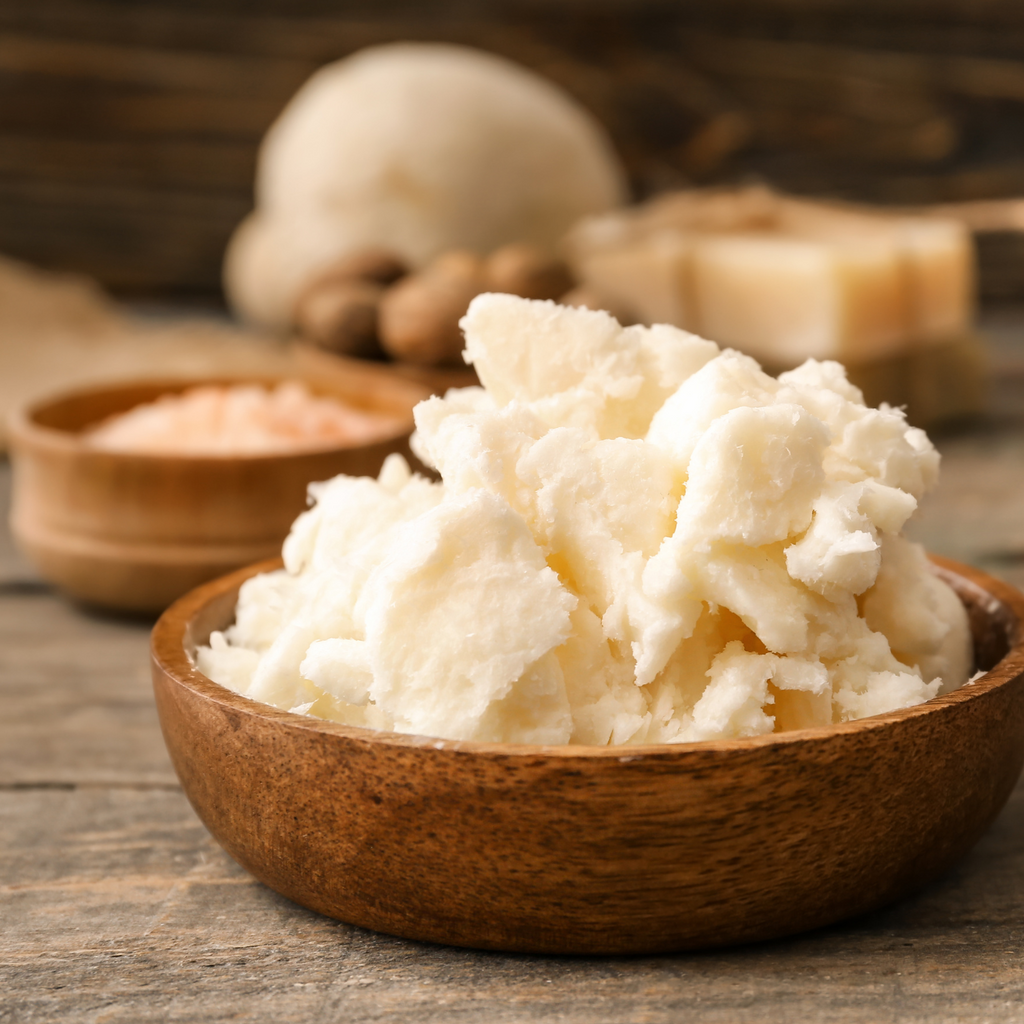
Price :
QTY :
CART TOTALS :
There are items
in your cart
CART TOTALS :

We all know by name this fabulous ingredient with extreme nourishing power, but do you really know where this ingredient comes from? natural beauty ? How he is manufactured? and what are all its benefits for our skin? We'll detail everything for you, just below!
In the vast expanses of the wooded savannahs of West Africa, lives a majestic tree, the shea tree. This tree, symbol of wealth and tradition, gives birth to one of the most precious treasures of this region: shea butter.
Shea butter is a valuable product derived from the nuts of the shea tree (Vitellaria paradoxa), also known as "shea" or "butter tree". This tree is indigenous to regions of West Africa, where it grows in wooded savannahs.
1. Harvesting Shea Nuts: Local communities harvest shea nuts mainly during the dry season, usually from June to September. The nuts are harvested by hand directly from mature trees, which can reach up to 15 to 20 meters in height.
2. Drying: The shea nuts are spread out in the sun for several days to dry them. This process makes it easier to extract the shea kernels from the nuts.
3. Shelling: Once dried, the nuts are shelled to recover the seeds (or kernels) inside. The outer shells are generally removed using traditional techniques or adapted machines.
4. Crushing: The shea kernels are then crushed to obtain smaller pieces. This process can be carried out using traditional wooden mortars or modern machines.
5. Roasting: Shea kernels are lightly roasted, usually in metal pots or on hot surfaces, to release more oil and develop the characteristic flavor of shea butter.
6. Grinding: The roasted shea kernels are then ground into a thick paste using millstones or presses. This grinding releases the natural oils contained in the almonds.
7. Mixing: The paste obtained is mixed with hot water to form an emulsion. This step helps separate the shea fats from the solid matrix of the paste.
8. Separation: The kneaded paste is pressed to extract the shea fats. The pressure exerted separates the fats from the other components of the paste, thus producing raw shea oil.
9. Filtration: Raw shea oil is filtered through sieves or cloths to remove impurities and obtain pure shea butter.
10. Cooling and Storage: The resulting shea butter is allowed to cool and harden before being stored in suitable containers, ready for use in a variety of cosmetic, culinary and medicinal applications.
Shea butter displays an impressive range of beneficial powers, making it an essential element in various areas:
Intense Hydration of the Skin: Thanks to its high content of fatty acids and vitamins, shea butter deeply nourishes the skin, leaving a feeling of softness and lasting hydration. It is particularly effective in soothing dry and irritated skin, as well as reducing skin imperfections such as scars and stretch marks.
Protection Against Environmental Aggressors: By forming a protective barrier on the skin, shea butter helps prevent damage caused by UV rays, wind and pollution, making it a valuable ally in the fight against premature aging of the skin.
Treatment of Skin Conditions: Thanks to its anti-inflammatory and healing properties, shea butter has been used for centuries to treat a variety of skin conditions such as eczema, psoriasis and burns. Its soothing action relieves itching and promotes natural healing of the skin.
Your shopping bag is empty
Go to the shop